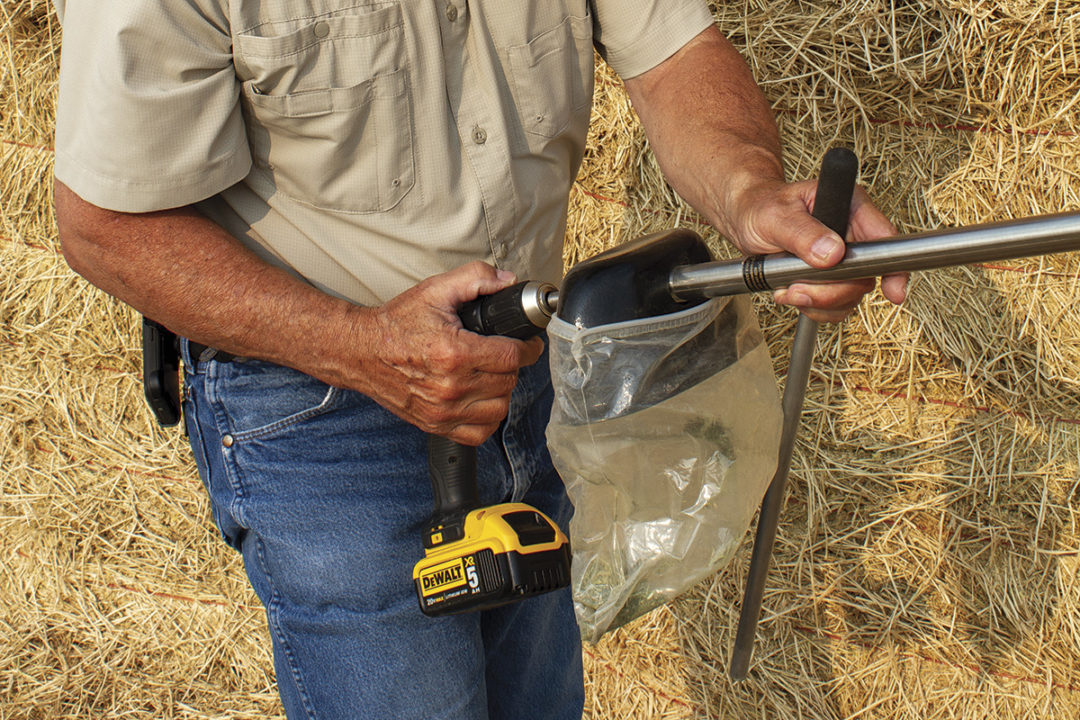There is an increased focus on the feed industry and hay markets as producers scramble to determine how they will combat low forage supplies this winter. As a generalized example, a 10% protein ration will satisfy the needs of any cow regardless of her status as pregnant or nursing. This gives producers a goal to shoot for. Remember that nutrient requirements change for cattle, and the efficient manager tailors the diet to match the energy and protein requirements.
Supplementing low-quality feed
In speaking with producers who have recently baled failed crops, I have learned of hay that tested 2.5% crude protein (CP) and some over 10% CP. All these observations are related to failed milo that was swathed and baled. What is the difference in value between these two hay sources to a rancher? How much value should a producer put on the value of protein? This changes depending on what feed source will be supplementing the primary forage to complete a cow’s nutritional requirement.
If I am supplementing a low-protein hay source to get to a 10% CP ration, it would be a popular option to use 20% range cubes. Many producers buy these in bulk and feed them using a cube feeder on their pickup. We can assume that these feeders are calibrated and that producers know exactly how many cubes are hitting the ground with each trip of the hopper or press of the button, but that is another management item that needs to be addressed. Under- or oversupplying supplemental nutrition can really add up over feeding windows that last months, and it is crucial to weigh distributed feed to ensure that producers and workers are supplying the correct amount of feed to their cattle.
Bulk cubes purchased from a local feed store in western Oklahoma will cost $435 per ton for 20% range cubes and $384 per ton for 14% pellets. There is certainly a nearly infinite amount of commodity blends and other ways to supplement cattle, but we will stick to these two popular options.
How much hay will a cow eat? A 1,200-pound cow eating 3% of her bodyweight could consume 36 pounds of hay per day if allowed free-choice consumption. This 36 pounds of hay from a 2.5% protein hay contains 0.9 pounds of protein. Her requirement in early lactation, which will be her highest need for protein, is 3.6 pounds of CP daily. Using 20% cubes, I will need to feed 13.5 pounds per day to meet her requirement. It is probable that the cow cannot consume enough of this ration to meet requirements. Low-quality hay is difficult for cows to digest, and consuming a total of 50 pounds of feed and hay requires a lot of rumen space. The 13.5 pounds of cubes will cost $2.94 per head per day for our example cow. If the bale weighs 1,200 pounds, then a 10% CP hay source should be comparatively worth $98 per bale more than a 2.5% hay source.
Remember that we said a 10% protein ration will be enough to satisfy a cow’s protein requirement. This works back into our example as that cow eats 36 pounds of a 10% protein hay, providing 3.6 pounds of CP.
Another example of supplementation could include utilizing a 14% pellet. Purchasing that product locally would cost me $384 per ton (19 cents per pound). From the prior example, utilizing a 2.5% protein hay, I would need to supplement with 19.3 pounds of 14% pellets to meet her protein requirement. This brings the daily cost of supplementation to $3.71 per head per day and makes the higher-quality 10% protein hay comparatively $123.67 more valuable per bale.
This is the reason I am an advocate for testing hay before you buy it. With the high cost of supplemental feed, producers need to obtain as much protein from the primary forage source as possible.
Issues with high-quality hay
What can a producer do about hay that is too high in quality? Considering alfalfa hay as a supplement source has some merit. If a producer can limit-feed hay or mix hay, this removes the need for utilizing pelleted feeds altogether. I have heard of alfalfa costing as much as $330 per ton, depending on location. Assuming this hay contains 25% CP if harvested in early bloom, it is a potent source of supplemental protein. Keeping with our previous example, our cow would need to consume enough alfalfa in place of poor-quality hay, as they are both primary roughage sources. Blending these two forages together at 24 pounds of 2.5% hay and 12 pounds of 25% alfalfa supplies our cow with the 3.6 pounds of protein she requires. The 12 pounds of alfalfa will cost $1.98 per head per day and makes the 10% protein hay comparatively worth $66 per bale more than the 2.5% hay.
From these examples, it is easy to conclude that a higher-protein source feed is the most affordable supplement regardless of the price per ton. Alfalfa is cheaper to supplement our cows when compared to 20% cubes, which were cheaper than 14% pellets. This analysis is only concerned with protein. Energy is another portion of the ration that needs to be balanced, and producers would benefit from consulting an extension educator for assistance and access to ration balancer calculators. If you are in the business to make your cow herd profitable, take a close look at your supplementation program for the coming year.







